(±)-Camphor
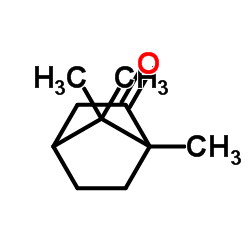
(±)-Camphor structure
|
Common Name | (±)-Camphor | ||
|---|---|---|---|---|
| CAS Number | 464-48-2 | Molecular Weight | 152.233 | |
| Density | 1.0±0.1 g/cm3 | Boiling Point | 207.4±0.0 °C at 760 mmHg | |
| Molecular Formula | C10H16O | Melting Point | 178-180ºC | |
| MSDS | Chinese USA | Flash Point | 64.4±0.0 °C | |
| Symbol |


GHS02, GHS07 |
Signal Word | Warning | |
Use of (±)-Camphor(-)-Camphor is a natural product that can be isolated from A. rnexicana[1]. |
| Name | camphor |
|---|---|
| Synonym | More Synonyms |
| Description | (-)-Camphor is a natural product that can be isolated from A. rnexicana[1]. |
|---|---|
| Related Catalog | |
| References |
| Density | 1.0±0.1 g/cm3 |
|---|---|
| Boiling Point | 207.4±0.0 °C at 760 mmHg |
| Melting Point | 178-180ºC |
| Molecular Formula | C10H16O |
| Molecular Weight | 152.233 |
| Flash Point | 64.4±0.0 °C |
| Exact Mass | 152.120117 |
| PSA | 17.07000 |
| LogP | 2.13 |
| Vapour density | 5.24 (vs air) |
| Vapour Pressure | 0.2±0.4 mmHg at 25°C |
| Index of Refraction | 1.485 |
| Stability | Stable. Incompatible with strong reducing agents, strong oxidizing agents, chlorinated solvents. Protect from direct sunlight. |
CHEMICAL IDENTIFICATION
HEALTH HAZARD DATAACUTE TOXICITY DATA
|
| Symbol |


GHS02, GHS07 |
|---|---|
| Signal Word | Warning |
| Hazard Statements | H228-H315-H319-H335 |
| Precautionary Statements | P210-P261-P305 + P351 + P338 |
| Personal Protective Equipment | Eyeshields;full-face particle respirator type N100 (US);Gloves;respirator cartridge type N100 (US);type P1 (EN143) respirator filter;type P3 (EN 143) respirator cartridges |
| Hazard Codes | F:Highlyflammable;Xi:Irritant; |
| Risk Phrases | R11;R36/37/38 |
| Safety Phrases | S16-S26-S37/39 |
| RIDADR | UN 2717 |
| WGK Germany | 1 |
| RTECS | EX1250000 |
| Packaging Group | III |
| Hazard Class | 4.1 |
| HS Code | 2914299000 |
| Precursor 8 | |
|---|---|
| DownStream 8 | |
| HS Code | 2914299000 |
|---|---|
| Summary | 2914299000. other cyclanic, cyclenic or cyclotherpenic ketones without other oxygen function. VAT:17.0%. Tax rebate rate:13.0%. . MFN tariff:5.5%. General tariff:30.0% |
|
Carvacrol and rosemary essential oil manifest cytotoxic, DNA-protective and pro-apoptotic effect having no effect on DNA repair.
Neoplasma 61(6) , 690-9, (2014) For several thousand years natural products were successfully used to treat a variety of diseases and to maintain health in humans, but until now it is not fully known what causes these medicinal effe... |
|
|
Development and application of a non-targeted extraction method for the analysis of migrating compounds from plastic baby bottles by GC-MS.
Food Addit. Contam. Part A. Chem. Anal. Control. Expo. Risk Assess. 31(12) , 2090-102, (2014) In 2011, the European Union prohibited the production of polycarbonate (PC) baby bottles due to the toxic effects of the PC monomer bisphenol-A. Therefore, baby bottles made of alternative materials, ... |
|
|
Seasonal and diurnal variation of organic ultraviolet filters from personal care products used along the Japanese coast.
Arch. Environ. Contam. Toxicol. 68(2) , 217-24, (2015) This study aimed to investigate the behavior of organic ultraviolet (UV) filters released by recreational activities along the Japanese coastline. Seasonal variations of organic UV filters in seawater... |
| Bicyclo(2.2.1)heptan-2-one, 1,7,7-trimethyl- |
| EINECS 207-354-7 |
| 1,7,7-Trimethylbicyclo[2.2.1]heptan-2-one |
| DL-Camphor |
| (1S,4S)-1,7,7-Trimethylbicyclo[2.2.1]heptan-2-one |
| 1,7,7-Trimethylbicyclo[2.2.1]-2-heptanone |
| (-)-Camphor |
| 2-Keto-1,7,7-trimethylnolcamphane |
| Bicyclo[2.2.1]heptan-2-one, 1,7,7-trimethyl- |
| (−)-Camphor,(1S)-1,7,7-Trimethylbicyclo[2.2.1]heptan-2-one |
| (±)-Camphor |
| 2-Camphonone |
| Camphor |
| (1S)-camphor |
| (1S)-1,7,7-Trimethylbicyclo[2.2.1]heptan-2-one |
| Bicyclo[2.2.1]heptan-2-one, 1,7,7-trimethyl-, (1S)- |
| DL-2-Bornanone |
| MFCD00064148 |
| L(-)-Camphor |
 CAS#:791787-82-1
CAS#:791787-82-1 CAS#:464-43-7
CAS#:464-43-7 CAS#:464-45-9
CAS#:464-45-9![(1S)-1,7,7-trimethylbicyclo[2.2.1]heptan-2-one oxime Structure](https://image.chemsrc.com/caspic/407/36065-15-3.png) CAS#:36065-15-3
CAS#:36065-15-3 CAS#:76-29-9
CAS#:76-29-9![tert-butyldimethyl(((1S,2R,4S)-1,7,7-trimethylbicyclo[2.2.1]heptan-2-yl)oxy)silane Structure](https://image.chemsrc.com/caspic/114/756834-48-7.png) CAS#:756834-48-7
CAS#:756834-48-7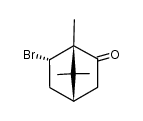 CAS#:33171-48-1
CAS#:33171-48-1 CAS#:64474-54-0
CAS#:64474-54-0 CAS#:560-09-8
CAS#:560-09-8 CAS#:79-92-5
CAS#:79-92-5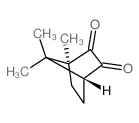 CAS#:2767-84-2
CAS#:2767-84-2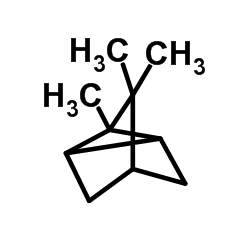 CAS#:508-32-7
CAS#:508-32-7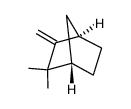 CAS#:5794-04-7
CAS#:5794-04-7
